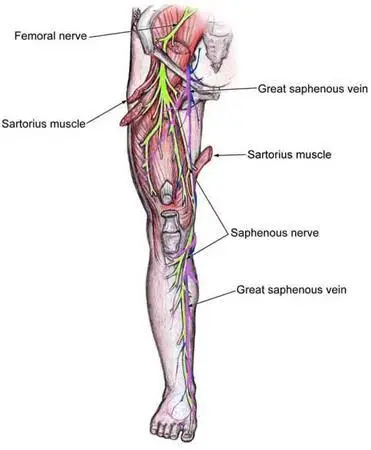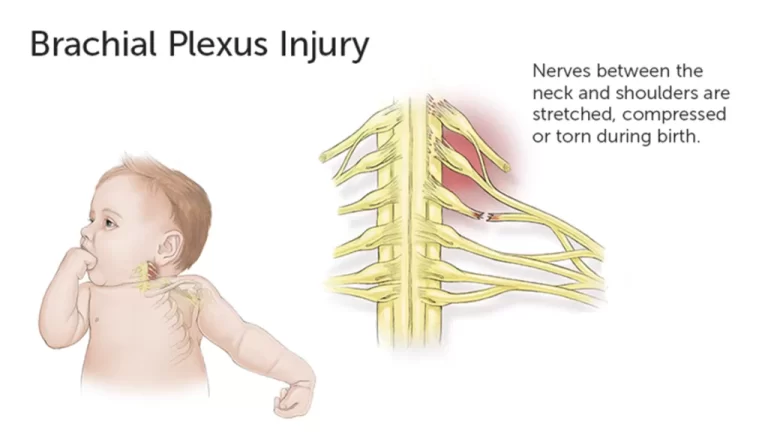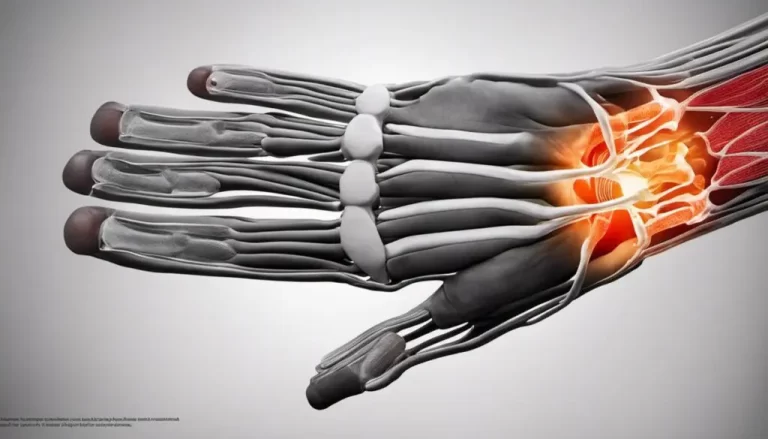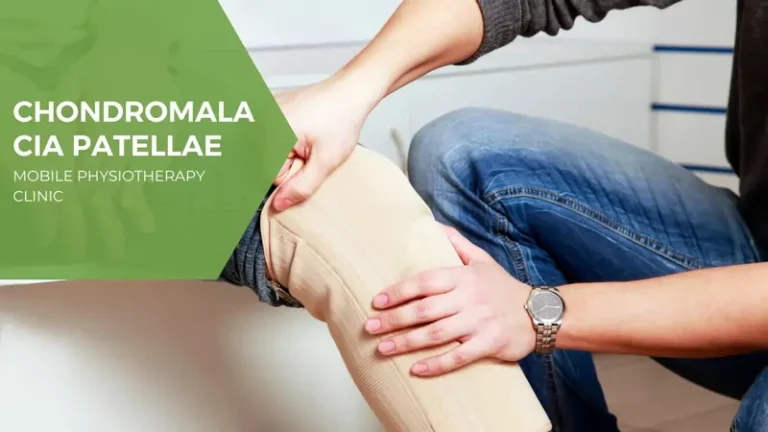Femoral Neuropathy
Table of Contents
What is a Femoral Neuropathy?
Femoral neuropathy refers to a condition characterized by damage or dysfunction of the femoral nerve, a major nerve that originates from the lumbar spine and extends down the leg.
The femoral nerve plays a crucial role in controlling the muscles of the thigh and leg, as well as providing sensation to the front and inner areas of the thigh, shin, and foot.
Introduction
- One potential reason for issues with sensation and movement in the legs is femoral neuropathy, also known as femoral nerve dysfunction. The femoral nerve, which originates in the pelvis and travels the entire length of the leg, can get damaged and cause femoral neuropathy. The femoral nerve supplies feeling to the front of your leg and facilitates leg movement. Femoral neuropathy, also referred to as mononeuropathy, typically affects a single nerve. Femoral neuropathy, along with other nerve disorders, can also be brought on by conditions that harm numerous nerves.
- Any condition resulting from injury to the femoral nerve, including pain in the femur, is referred to as femoral neuropathy. It may result in weakness, discomfort, numbness, and even paralysis in the legs.
Femoral nerve anatomy
Anatomy of the femoral neuropathy is mentioned as below paragraph,
- One of the biggest nerves in the body is the femoral nerve. It splits into multiple smaller branches after starting in the pelvis. Different leg muscles are controlled by these nerve branches. The femoral nerve is primarily in charge of the thigh muscles and is also in charge of knee extension and hip bending. Additionally, when pressure is applied to the inner calf or thigh, it gets signals from the skin.
- The greatest nerve in the lumbar plexus is the femoral nerve. It comes from the L2-L4 ventral rami’s dorsal divisions. It is involved in the lower limbs’ motor and sensory processing. It is related to, the main muscles used in knee extension and hip flexion.
- sensation extending down the medial leg to the hallux (great toe), as well as along the anterior and medial thighs
Causes of femoral neuropathy
Causes of the femoral neuropathy is mentioned as below paragraph,
- One of the biggest nerves in your leg is the femoral nerve. It regulates the muscles that assist in extending your leg and moving your hips, and it is situated close to the groin. Additionally, it gives you sensation at the front of your thigh and the lower portion of your leg. Damage to the femoral nerve is rare compared to neuropathies caused by damage to other nerves because of where it is placed. Damage to the femoral nerve impairs your gait and may result in issues with feeling in your foot and leg.
- An immediate injury; a tumor or other growth obstructing or trapping a portion of your nerve; prolonged pressure on the nerve, as from prolonged immobilization; a pelvic fracture; radiation to the pelvis; bleeding or hemorrhaging into the retroperitoneal space, the area behind the abdomen; a catheter inserted into the femoral artery, which is required for certain surgical procedures
- Femoral neuropathy is caused by diabetes. blood pressure and blood sugar swings might result in extensive nerve damage. Peripheral neuropathy is the term used to describe nerve injury that affects your hands, arms, legs, feet, and toes. The question of whether femoral neuropathy is a type of diabetic amyotrophic or a true peripheral neuropathy is currently up for dispute.
Epidemiology of femoral neuropathy
Epidemiology of the femoral neuropathy is mentioned as below paragraph,
- Peripheral neuropathy is a disease under which femoral nerve dysfunction falls. Even though peripheral neuropathy is more common as people age, medical data regarding its diagnosis are still lacking in detail and significantly underdiagnosed. Because of this, no epidemiological study has been able to determine the prevalence of the condition worldwide with accuracy.
- The prevalence rates of peripheral neuropathy in epidemiological studies differ significantly based on the literature source because the data sources that are now accessible do not concentrate on the entire population. Nonetheless, estimates place the global prevalence of peripheral neuropathy between 2 and 7%. Additionally, compared to developing nations, peripheral neuropathy is more prevalent in Western nations.
Risk factors of femoral neuropathy
Risk factors of the femoral neuropathy is mentioned as below paragraph,
- Determining the people who might be more vulnerable to developing femoral neuropathy requires an understanding of the risk factors linked to the ailment. To effectively prevent or manage femoral neuropathy, healthcare practitioners can take proactive actions by identifying certain risk factors. Obesity is a major risk factor for femoral neuropathy. Being Overweight places additional strain on the nerves, which may cause injury and compression. Keeping up a healthy weight with a balanced diet and frequent exercise will help lower the chance of getting this illness.
- Diabetes is another prevalent risk factor. Over time, high blood sugar levels can harm nerves, particularly the femoral nerve. Minimizing the risk of diabetes requires proper management, which includes blood sugar control and routine check-ups with a healthcare professional. Furthermore, a higher risk of developing femoral neuropathy has been associated with inflammatory illnesses such as rheumatoid arthritis and peripheral artery disease (PAD). By being aware of these underlying issues and getting the right care, you can reduce the risk.
- Diabetes increases the risk of peripheral neuropathy, including femoral neuropathy, as nerve damage can result from long-term variations in blood pressure and blood sugar. Femoral neuropathy increases the chance of falling or getting hurt again by causing tissue damage, muscle atrophy, and loss of feeling if treatment is not received.
Signs and symptoms of femoral neuropathy
Sign and symptoms of the femoral neuropathy is mentioned as below paragraph,
Moving about may be difficult as a result of this neurological issue. You might not be able to apply pressure to the affected limb and feel as though your leg or knee is weak.
Your legs may also experience strange feelings. Among them are:
- any area of the leg that is numb (usually the front and inside of the thigh, but it can extend to the foot)
- tingling in the leg in any area, dull aching pain in the vaginal area
- weakness in the lower limb muscles.
- weakness in the quadriceps muscle causing difficulty extending the knee and a sensation that your leg or knee is about to buckle.
How severe femoral neuropathy is?
- Blood flow might be impaired in the affected area by prolonged pressure applied to the femoral nerve. Tissue injury may come from the reduced blood flow.
- An injury to your femoral vein or artery may have also caused harm to your nerves. There could be hazardous internal bleeding from this. Situated near the femoral nerve, the femoral artery is constricted. Trauma frequently harms both simultaneously. Compression on the nerve may result from arterial damage or hemorrhage.
- Furthermore, a large section of the leg receives feeling from the femoral nerve. Injuries may result from this loss of sensation. Weak leg muscles can increase your risk of falling. Falls are especially dangerous for senior citizens because they can result in hip fractures, which are extremely serious injuries. sometime it is more dangerous condition in which it can be lead to severe kind of complications regarded to it. And it is difficult for one to get read of it once it turn into complications.
Meralgia Perasthetica: What Is It?
- The lateral femoral cutaneous nerve is impacted by a form of femoral nerve dysfunction called meralgia Perasthetica, also referred to as Bernhardt-Roth syndrome. The skin on your thigh has feeling and sensibility thanks to this section of the femoral nerve.
- Meralgia Perasthetica is characterized by burning, tingling, or numbness, especially in the thigh area. With this illness, these symptoms are more common on the outside of the thigh.
- The most common causes of this kind of femoral neuropathy include weight gain, hip traumas, repetitive leg motions, and wearing a belt too tightly.
Is it sciatica or femoral neuropathy?
- Sciatica and femoral neuropathy may present with similar symptoms. Leg weakness, tingling, numbness, burning, and pain are possible symptoms of both illnesses.
- Beginning in your lower back, the sciatic nerve travels down the entire length of your leg. It regulates other leg muscles as well as the muscles in the back of your knee.
- The causes of the two disorders are different: femoral neuropathy is caused by pressure on the nerve, whereas sciatica is caused by damage to or pressure on the sciatic nerve. The back of the leg is typically more affected by sciatica than the front.
- Your doctor may suggest a diagnostic scan to detect sciatica or femoral neuropathy based on where the alterations in sensation are located. Your treatment will be more successful since it can target the right location once your doctor has identified the underlying problem.
When to consult a physician in case of femoral neuropathy
When to see the doctor advise in case of the femoral neuropathy is mentioned as below paragraph,
- Individuals experiencing new or worsening symptoms of femoral neuropathy should consult a physician.
- If a patient experiences this problem after undergoing hip surgery or another pelvic intervention, they should get in touch with their treating physician.
Diagnosis of the femoral neuropathy
Diagnosis of the femoral neuropathy is mentioned as below paragraph,
Preliminary examinations
- In order to determine the etiology of femoral neuropathy, your physician will do a thorough physical examination and inquire about any recent surgical procedures or injuries you may have had.
- They will test particular muscles that receive feedback from the femoral nerve to detect weakness. Your physician will likely examine your knee reflexes and inquire about any changes in sensation at the front of your thigh and the middle of your leg. Finding out if the femoral nerve is the only nerve involved in the weakening or if other nerves are also involved is the aim of the evaluation.
Other examinations
Conduction of nerves
Nerve conduction measures how quickly electrical impulses travel via your nerves. An aberrant reaction, like a sluggish pace at which electrical signals pass through your nerves, typically denotes nerve injury.
EMG, or electromyography
After the nerve conduction test, electromyography (EMG) should be done to assess the function of your muscles and nerves. This test captures your muscles’ electrical activity when the nerves that supply them are firing. Whether the muscle reacts to stimulus adequately will be determined by the EMG. An EMG can detect abnormalities such as muscles firing on their own, which can be caused by certain medical problems. The exam can uncover issues with both muscles and nerves because nerves both stimulate and govern your muscles.
CT and MRI scans
Any growths, tumors, or other masses near the femoral nerve that can compress the nerve might be seen with an MRI scan. An MRI scan creates a detailed image of the body part being scanned by using radio waves and magnets. Additionally, a CT scan can search for bone or vascular growth.
Blood Tests
To look for underlying diseases like diabetes or inflammatory illnesses that may be linked to nerve injury, blood tests may be performed.
Diagnostic Block
To help identify the cause of your discomfort, your doctor may occasionally employ diagnostic nerve blocks. To momentarily numb the nerve, an anesthetic is given close to it. Should the discomfort subside following the injection, this may suggest that the nerve is the cause of the issue.
Other Tests
To rule out any particular problems that might be harming the femoral nerve, further tests such as X-rays or ultrasounds may be performed, depending on the probable cause. After the nerve conduction test, electromyography (EMG) should be done to assess the function of your muscles and nerves. This test captures your muscles’ electrical activity when the nerves that supply them are firing. Whether the muscle reacts to stimulus adequately will be determined by the EMG. An EMG can detect abnormalities such as muscles firing on their own, which can be caused by certain medical problems. The exam can uncover issues with both muscles and nerves because nerves both stimulate and govern your muscles.
Differential diagnosis of the femoral neuropathy
Differential Diagnosis of the femoral neuropathy is mentioned as below paragraph,
Lumbar plexus injury and L2–L4 radiculopathy are included in the differential diagnosis of femoral neuropathy. These three creatures could seem extremely similar on the surface. A depressed or absent quadriceps reflex and quadriceps muscular weakness are possible symptoms of all three. Some of them have many similarities in the symptoms of the disease . In that disease some time it is a difficult task to differentiate that disease among with each other, so here are the mainly different between them. One should take a detailed study about them to diagnoses disease from there similar one in the catgories.
Non-femoral-innervated L2–L4 muscles, however, are normal in an isolated femoral neuropathy. In particular, the ankle dorsiflexion (tibialis anterior), innervated by the peroneal nerve (L4–L5), and the adductor muscles, innervated by the obturator nerve, are spared. In contrast, lumbar plexus or lumbar nerve root injuries may cause these muscles to become weak.
It could be challenging to demonstrate a modest adductor muscle weakening if pain is a significant factor. Radiculopathy is indicated by back pain that radiates or becomes worse with back mobility. The range of sensory impairments in L2–L4 radiculopathy, lumbar plexopathy, and femoral neuropathy may be somewhat comparable. Nevertheless, isolated femoral neuropathy does not provide aberrant feeling over the lateral thigh (lateral femoral cutaneous nerve area) or the very proximal medial thigh (obturator nerve territory); both of these results point to a plexus or root lesion.
Iliopsoas Hematoma: This condition is caused by blood build-up in the iliopsoas muscle, usually as a result of injury or the use of anticoagulants, which puts pressure on the femoral nerve.
Iliacus Muscle Strain: Similar symptoms may arise from straining or damaging the iliacus muscle, which is located near the femoral nerve.
Hernia in the inguinal region: This type of hernia can put pressure on the femoral nerve, causing symptoms that are similar to those of femoral neuropathy.
Nerve Entrapment: When the femoral nerve travels through constricted anatomical structures, such as the inguinal ligament, it may become imprisoned or squeezed.
Pelvic Tumor or Mass: Growths or tumors in the pelvic area have the potential to compress the femoral nerve and result in neuropathy.
Pregnancy-Related Nerve Compression: The expanding uterus during pregnancy can put pressure on the femoral nerve.
Treatment of femoral neuropathy
Treatment of the femoral neuropathy is mentioned as below paragraph,
Conservative Treatment of the femoral neuropathy
Conservative Treatment of the femoral neuropathy is mentioned as below paragraph,
Options for treatment in femoral neuropathy: Treating the underlying illness or cause is the first step in treating femoral neuropathy. Relieving the compression on the nerve will be the aim if it is the reason. Sometimes, in minor injuries like a stretch injury or slight compression, the issue will go away on its own. Returning blood sugar levels to normal may help diabetics. sometime it is more dangerous condition in which it can be lead to severe kind of complications regarded to it. And it is difficult for one to get read of it once it turn into complications. You will require treatment if your nerve doesn’t get better on its own. Physical therapy and medicines are typically used for this. this treatment effective in relieving pectineus muscle pain in body.. This includes,
- Drugs
- Counseling
- Electrotherapy
- Applying heat or cold packs
- Gait Training
- Functional Exercises
- Exercises for Nerve Gliding
- Acupuncture
- Other Exercises
Drugs
To treat any swelling and inflammation in your leg, you may receive injections of corticosteroids. Any discomfort or pain can be lessened with the aid of painkillers. Your doctor may recommend drugs like amitriptyline, pregabalin, or gabapentin to treat neuropathic pain.
Counseling
Your leg muscles can be strengthened with the aid of physical treatment. Your physical therapist will teach you muscle-strengthening and muscle-stretching exercises. Physical therapy aids in pain relief and increases the range of motion. An orthopedic device, like a brace, can be necessary to help you walk. In most cases, knee braces help avoid knee buckling. this treatment effective in relieving pectineus muscle pain in body.
Depending on the extent of your mobility issues and the severity of your nerve injury, occupational therapy may also be necessary. This kind of therapy teaches you how to take care of yourself on a daily basis, including taking a shower and other responsibilities. We refer to these as “daily living activities.” If your illness compels you to seek employment in a different field, your physician may also suggest vocational counseling.
Electrotherapy
To reduce pain and enhance nerve function, methods such as transcutaneous electrical nerve stimulation (TENS) may be applied.
Applying heat or cold packs
Applying heat or cold packs to the affected area might help lessen pain and inflammation.
Gait Training
It can be helpful to work with a physiotherapist to enhance your balance and gait.
Functional Exercises
Regaining functional mobility can be facilitated by performing exercises that are similar to your regular tasks.
Exercises for Nerve Gliding
To encourage healthy nerve mobility, these exercises entail gently moving the affected limb in particular ways.
Acupuncture
Complementary therapies such as acupuncture or massage can provide relief from neuropathic pain for certain people. this treatment effective in relieving pectineus muscle pain in body.
Other Exercises
- Hip Flexor Stretch
- Stretch your quadriceps
- Stretch your hamstrings
- Stretch your inner thighs
- Leg Lifts, prone SLR
- Riding/cycling
Hip Flexor Stretch
Hip Flexor Stretch Position mentioned as below,
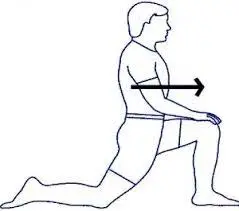
While maintaining a straight back, bend one knee and extend the other leg forward. To feel the stretch in front of your pelvis, gently lean forward. this exercises is one of the exercises which can lead to decrease in pain in pectineus muscle of the groin in lower extremities in the body. Repeat holding for 20 to 30 seconds on each side.
Stretch your quadriceps
Stretch your quadriceps Position mentioned as below,

Stretch your quadriceps by bending one leg at the knee and grasping the ankle behind you while standing. To extend the front of the thigh, slowly pull the ankle in the direction of the buttock.this exercises is one of the exercises which can lead to decrease in pain in pectineus muscle of the groin in lower extremities in the body. Repeat holding for 20 to 30 seconds on each side.
Stretch your hamstrings
Stretch your hamstrings Position mentioned as below,
To stretch your hamstrings, sit on the floor with one leg extended and the other bent so that the bent leg’s sole presses against your inner thigh. this exercises is one of the exercises which can lead to decrease in pain in pectineus muscle of the groin in lower extremities in the body. Feel the stretch on the back of your thigh by extending your arm towards your toes. Wait 10 to 20 seconds and then release this position.
Stretch your inner thighs
Stretch your inner thighs Position mentioned as below,

Stretch your inner thighs by sitting on the floor and bending your legs outward with your feet together. To feel the stretch in your inner thighs, gently press your knees to the floor. Stretch your inner thighs by sitting on the floor and bending your legs outward with your feet together. To feel the stretch in your inner thighs, gently press your knees to the floor. this exercises is one of the exercises which can lead to decrease in pain in pectineus muscle of the groin in lower extremities in the body.
Leg Lifts, prone SLR
Leg Lifts, prone SLR Position mentioned as below,
While lying on your back, gradually raise one leg a few inches off the ground while maintaining a straight knee. After holding it for three to five seconds, lower it back down. Continue with the opposite leg.this exercises is one of the exercises which can lead to decrease in pain in pectineus muscle of the groin in lower extremities in the body.
SLR Position mentioned as below,
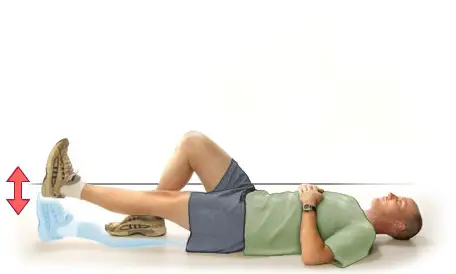
While lying on your back, raise one leg slightly off the floor while maintaining knee straightening while exercise practice.
Riding/ cycling

Riding/ cycling Position mentioned as below,
Light riding while standing on a bike helps strengthen your leg muscles and increase circulation, if your healthcare provider approves. this treatment effective in relieving pectineus muscle pain in body.
Lifestyle modifications in the femoral neuropathy
In certain instances, altering one’s lifestyle can aid in the management of femoral neuropathy symptoms.
Changes in lifestyle may include
- avoiding prolonged pressure-causing actions on the femoral nerve
- controlling diabetes by talking to a physician about the possibility of femoral neuropathy when thinking about hip replacement surgery
- Hand treatment
Massage therapy includes manual therapy.
A therapist will employ particular strokes with the intention of
- expand flexibility and range of motion
- lessen edema and discomfort and enhance muscular function
- In order to lessen the effects of scarring and encourage the formation of new tissue, they will manipulate the soft muscle. this treatment effective in relieving pectineus muscle pain in body.
Cognitive behavioral intervention
In cognitive behavioral therapy, a client receives counseling that teaches them coping skills to help them address issues. Those who have persistent or chronic femoral neuropathy may find this useful.this treatment effective in relieving pectineus muscle pain in body.
Gaining more knowledge regarding the cause of the pain could let the sufferer feel more in control of their suffering.
Operative treatment of femoral neuropathy
Operative Treatment of the femoral neuropathy is mentioned as below paragraph,
In the event that your femoral nerve development is obstructing it, your doctor may suggest surgery. The pressure on your nerve will subside if the tumor is removed.
Decompression of the nerves
Surgery to remove the underlying cause and alleviate pressure on your nerve is known as nerve decompression. This procedure is used if your femoral nerve is compressed, particularly because of a tumor, cyst, or other growth. By making just three tiny incisions, doctors can relieve the injured nerve from whatever is crushing it with this novel, minimally invasive surgery. this treatment effective in relieving pectineus muscle pain in body.
The majority of patients have great pain prevention and the quick regiment of some sensation and mobility in their leg following an hour and a half of nerve decompression surgery. After two to three weeks, they can usually resume their regular activities. Physical therapy can help them make even better and longer-lasting improvements.
Nerve Restoration
For those whose femoral nerve is too injured to heal from decompression alone, nerve repair surgery may be a possibility. this treatment effective in relieving pectineus muscle pain in body. In order to restore function, scar tissue from the nerve ends must be removed, and the nerve must then be reconnected with a tiny suture.
Depending on the severity of the damage, recovery time frames may vary and the process could take more than two hours. While nerve function can sometimes be recovered rapidly, in other cases it may take several months for the damaged muscle to entirely regenerate.
Transplant of nerves
When there is severe nerve damage, a significant portion of the nerve may get crushed or disappear. In a nerve transplant, also known as a nerve graft, the gap is filled in using nerve tissue removed from a cadaver and placed elsewhere in the body. The nerve will regrow through the transplant to regain movement and sensation, much like when a wire is repaired.this treatment effective in relieving pectineus muscle pain in body.
It can take many hours to finish a nerve transplant. Because it takes time for the nerve fibers to regenerate, recovery may take several weeks or months.
Tumor Removal
Surgery may be required to remove a tumor or growth that is compressing the femoral nerve.
Lysis of Adhesions
This treatment aims to remove scar tissue or adhesions that may be trapping nerves.
Prospects for the future following treatment
Once the underlying disease is treated, you may be able to recover completely. You may permanently lose feeling or movement in that leg if the treatment is unsuccessful or if the damage to the femoral nerve is severe.
Advice on avoiding nerve injury
Advice on avoiding nerve injury in case of the femoral neuropathy is mentioned as below paragraph,
By controlling your blood sugar, you can reduce your chance of developing diabetic femoral neuropathy. This lessens the harm that this illness can do to your nerves. Every cause would be the focus of preventive actions. Consult your physician for guidance on the best preventive measures for you.
Sustaining an active lifestyle contributes to improved stability and strong leg muscles.
Complications
Complications of the femoral neuropathy is mentioned as below paragraph,
Failed to treat femoral neuropathy may result in the following:
- irreversible nerve damage
- chance of suffering a leg injury that is invisible because of nerve loss, decreased range of motion, or muscular atrophy sometime it is more dangerous condition in which it can be lead to severe kind of complications regarded to it. And it is difficult for one to get read of it once it turn into complications.
Summary
- Any medical disorder that damages the femoral nerve is referred to as femoral neuropathy. Leg paralysis, weakness, or numbness are common symptoms.
- Trauma, hip or abdominal surgery, or complications from another illness, like diabetes, can all lead to the development of femoral neuropathy.
- The effects of treatment can be managed or reduced.
FAQs
A disorder known as femoral neuropathy causes harm or compression to the femoral nerve, which can result in discomfort, weakness, or numbness in the leg and thigh.
Diabetes, trauma, strain on the nerve from extended sitting, hip surgery, and certain medical problems are among the common reasons.
Pain, numbness, or weakness in the front of the thigh, along with trouble getting up from a seated or walking position, are common symptoms.
A physical examination, a review of the patient’s medical history, nerve conduction investigations, and maybe imaging tests like MRIs or CT scans are all common diagnostic procedures.
Therapy is based on the underlying reason. It may entail pain management, physical therapy, underlying ailment management, and occasionally surgery.
Certain illnesses like diabetes can be managed, keeping a healthy weight, and avoiding applying too much pressure to the thighs can all help lower the risk.
The degree and cause of the nerve injury determine the result. Certain situations can eventually get better with the right care and attention.
If treatment for the condition is not received, complications may include poor quality of life, loss of sensation, muscle weakness, and difficulties walking.
See a medical expert if you have ongoing thigh discomfort, numbness, or weakness, especially if it’s preventing you from going about your regular activities.
Indeed, physical therapy can be quite helpful in reducing discomfort from femoral neuropathy and increasing muscular strength and mobility.
A physical examination, a review of the patient’s medical history, nerve conduction investigations, and maybe imaging tests like MRIs or CT scans are all common diagnostic procedures.
References
- Delgado, A. (2018, September 17). Femoral neuropathy. Healthline. https://www .healthline.com /health/ femoral -nerve- dysfunction
- WebMD Editorial Contributors. (2021, April 16). What to know about femoral neuropathy. WebMD. https ://www.webmd.c om/diabetes/ what-to -know- about- femoral- neuropathy
- Eske, J. (2023, February 9). What to know about femoral neuropathy. https ://www.medical newstoday. com/articles /324084 #summary
- Wikipedia contributors. (2023a, September 20). Femoral nerve dysfunction. Wikipedia. https: //en.m. wikipedia.org/wiki/Femoral _nerve_d ysfunction
- Themes, U. (2019, March 1). Femoral neuropathy. Musculoskeletal Key. https://musculoskeletal key.com /femoral- neuropathy/
- Femoral Neuropathy | The Institute for Advanced Reconstruction. (n.d.). https:// www.advanced reconstruction.com /lower -extremity /femoral-neuropathy
- Femoral neuropathy: Causes, Risk Factors, Symptoms, Treatment. (n.d.). https: //continentalhospitals.com/diseases/femoral-neuropathy/#risk_factors
- Solanki, V. (2023, August 22). Femoral neuropathy – cause, symptoms, treatment. Samarpan Physiotherapy Clinic. https://samarpan physioclinic. com/femoral- neuropathy/# FAQ

